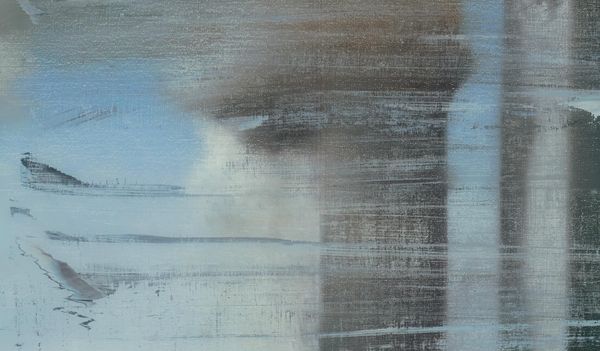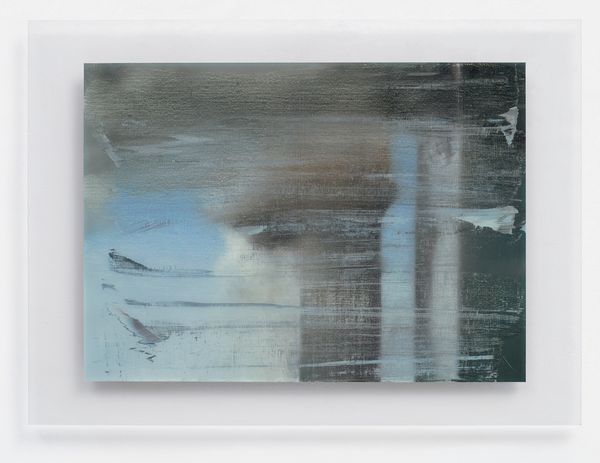Detail of Gerhard Richter September, 2009
September is a history painting, but not in the way that we might expect. Counter to the tradition of depicting a major event in a rhetorically grandiose format, Gerhard Richter instead presents us with an intimately scaled, almost obscured image that slowly unfurls before the viewer. Taken from the 2005 painting of the same title, Richter's print, sandwiched between planes of glass, presents a crucial moment of the attacks of September 11th, 2001.
The artist's initial painted composition was delicately, realistically reproduced in colorful detail—as Richter described it, "with the garish explosion beneath the wonderful blue sky and the flying rubble." However, he found the painting unbearable in this form, too real and too close both pictorially and perhaps emotionally. He stated: "That couldn't work; only when I destroyed it, so to speak, scratched it off, was it fit to be seen." By flaying the surface of the image, Richter disrupts the meticulous paintwork, rendering the trauma not only visible but palpable.
...garish explosion beneath the wonderful blue sky and the flying rubble...
—Gerhard Richter
The image exists at the edge of being recognizable, at the liminal point where the information it contains could assemble into a number of known narratives, and the mind must work to create coherence from the ill-defined contours of form and blurred color.
A figment, or fraction, of memory rather than a documentation of history, Richter's September assembles the multitude of recorded and recycled mass media images from the viewer's visual archive, with the glass plates recalling the digital and televisual mediums through which most of the world collectively witnessed this event. Yet by obscuring the image, Richter chooses to distance the viewer from this remembered visual record, deliberately opening gaps of meaning between us and the images we know so well.

